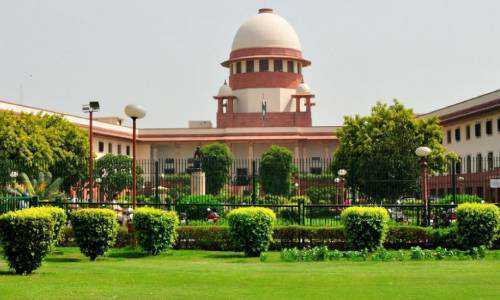
The Supreme Court ruled that a single claim could not be used to establish default and admit a petition.
In the instant case titled Indus Biotech (P) Ltd. v. Kotak India Venture (Offshore) Fund the issues raised before the Supreme Court for clarification were:
Whether the adjudicating authority rule on the application under Section 8 of the Arbitration and Conciliation Act of 1996 (the A&C Act) before ruling on the application under Section 7 of the Insolvency and Bankruptcy Code of 2016 (the IBC)?
What should the National Company Law Tribunal (NCLT) look into under Section 7 of the IBC?
Was the Arbitral Tribunal's appointment procedure followed?
With regard to the first issue, The Supreme Court decided that if a Section 8 A&C Act application is pending in a Section 7 IBC application that has not been admitted, the adjudicating body must first evaluate the Section 7 IBC application and determine if the financial debtor has defaulted. The SC, on the other hand, does not significantly grapple with this question in the facts of Indus Biotech. Indus filed an application challenging the Section 7 IBC proceeding's maintainability. The Section 8, A&C Act application, on the other hand, was taken into consideration by NCLT. The NCLT's order demonstrates this.
The NCLT should have decided first whether or not to accept a Section 7 IBC proceeding. If it chooses to admit it, the proceeding will become in rem, and a pending Section 8, A&C Act application will not survive, nor would a future application be maintainable. If it was determined that there is no default and hence no trigger for Section 7 IBC, there would have been no need to consider the Section 8, A&C Act application because the primary procedure had ended. As a result, it's difficult to reconcile the Supreme Court's decision to uphold the NCLT's judgement permitting the Section 8, A&C Act application and dismissing the Section 7 IBC proceedings.
A Section 7 IBC application's scope and inquiry differ from a Section 8, A&C Act application's scope and inquiry. When an operational creditor approaches the court, the inclusion of an arbitration clause and the existence of a dispute is significant for the purposes of Section 9[10] IBC. It will constitute a barrier to the start of the corporate insolvency process. In the instance of Section 7 of the IBC, however, this is not the case. The fundamental distinction between Section 7 and Section 9 of the IBC is this.
The court categorically held that:
“In corporate circles, a significant Supreme Court of India decision generated news, notably in the context of financial recoveries. The major point of controversy, in this case, was the relevant formula for converting the OCRPS. According to Kotak, it would be entitled to 30% (thirty per cent) of the entire paid-up share capital. Indus, on the other hand, believed that Kotak was only entitled to 10% (ten per cent) of the total paid-up share capital. The parties had to resolve their differences of opinion in order to convert the OCRPS, and they had conducted several meetings and taken concrete efforts toward resolving the disagreement, which had yet to reach a conclusion”.
With regard to the second issue, Both the NCLT and the SC proceeded with the idea that Kotak is a financial creditor who owes money, but they later discovered that there has been no default. Both NCLT and SC failed to conduct a thorough analysis of default. There is also no debt analysis or determination.
With regard to the third issue, Indus filed a Section 11 petition, but according to the SSSA, Indus had no right to propose an arbitrator. The established method had not failed, and the Section 11 petition had been filed too soon. On this point, the Supreme Court held that an affidavit signed by promoters (only promoters and Kotak had the right to choose an arbitrator) was sufficient to form an Arbitral Tribunal. The problem is that Indus lacked the legal authority to submit a Section 11 petition. The arbitration notification is defective, according to Kotak, and the petition is not in conformity with the arbitration agreement.
The NCLT's decision is not a decision on the merits of the Section 7 IBC application. If the presence of a disagreement is not an inquiry for a Section 7 IBC action and the Section 7 IBC application must be reviewed first, the SC should have set aside the impugned order and returned the case to NCLT for a decision on the merits of the Section 7 IBC proceedings. If the occasion occurs, the Court might consider clarifying that the NCLT cannot determine the Section 8, A&C Act case first and then dismiss the Section 7 IBC proceeding as a corollary or result.

